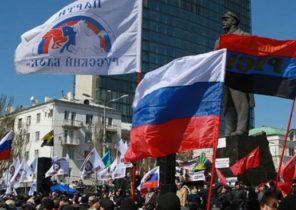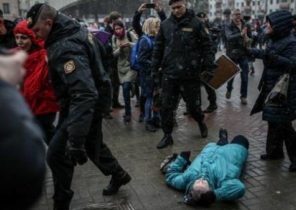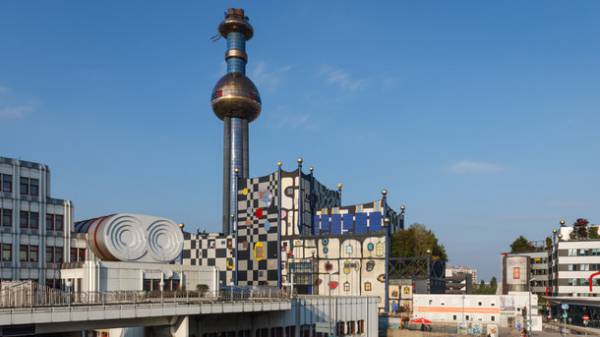
Types of thermal recycling are pyrolysis, incineration and plasma gasification. Important advantages of modern methods of such processing are: effective utilization of waste, reduction of waste volume up to 10 times, the use of the energy potential of organic waste.
In pyrolysis the waste is heated in an oxygen-free environment, to produce liquids and gases that can be used as fuel. The method is potentially useful but in practice the unit is mainly used for recycling of homogenous industrial waste (e.g., tires), but for the waste they are not practically used. Now the world’s most widely-incineration of waste. Technology plasma gasification is a relatively new development and nebesplatno, so it is less common than burning.
Waste incineration
Produced in the burning furnaces of different designs, the main element of which is the grate, which is in the process of combustion. The space inside the furnace is divided into several zones, where consistently the processes, resulting in waste incineration.
There are various technologies for waste incineration. In grate combustion offers hot air flow to the layer of waste is loaded on the grate. There are varieties of such combustion: fixed grate, fixed bed waste, moving chain grate or fixed. In the application of technology for fluidized bed waste is pre-separated into homogeneous fractions, and then combusted in the presence of sand, dolomite aggregate, or other absorbent. In the combustion process of a particle layer under the action of jets of air begin to actively move that is reminiscent of the behavior of the liquid. Each technology has its advantages and disadvantages, no clear leader.
In the General case, the combustion process consists of five stages that typically occur sequentially but can be and at the same time, it’s: drying, gasification, ignition, combustion and post-combustion. In the drying zone evaporates the moisture contained in the waste. In the area of gasification of the formation of volatile compounds that fall into the zone of fire. And if the first two areas requires a supply of heat from outside, after the ignition of the volatile components burn independently. For complete combustion of the waste and of cooling the grate in the combustion zone the necessary air supply.
Each type of waste requires its own technological conditions for burning. Because waste is always a mixture, for many of their components combustion conditions are not optimal, which may lead to deterioration of the composition of the fractions formed during combustion.
Any burner needs to be equipped with a device for so-called “backlight” or the stabilization of combustion. This “light” is burning fuel stabilization, which is usually used gas or fuel oil.
If you use any of the technology of waste incineration produces large quantities of carbon dioxide and gaseous emissions that contain oxides of nitrogen, sulfur, hydrochloric acid, etc., as well as heavy metals and dispersion of dust. All this “bouquet” is absolutely not necessary in the atmosphere, so volatile gases in the incinerator are cleaned, which can be carried out dry, wet and electrostatic methods or a combination.
The main device node for the dry cleaning is a vortex element (retains coarse particles). Wet cleaning allows to associate water with some harmful substances. During electrostatic cleaning of dust particles and aerosols electrified and are attracted to the electrode.
In addition, the functions of the first stage flue gas is partly performs waste incineration boiler. For example, the concentration from the combustion of dioxins and furans significantly reduced if flue gases are in a zone with a temperature of over 850°C for at least 2 s to ensure this, selected special mode of combustion.
In addition to the gaseous products of combustion wastes are generated and solid particles of metals, glass, slag, etc., which require recycling or disposal. By weight they make up about 10% of the waste.
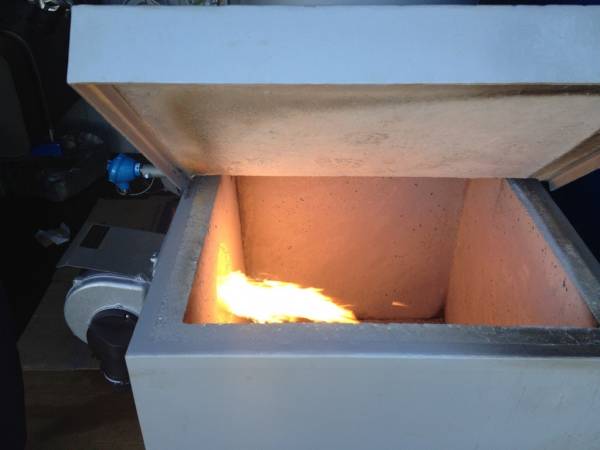
Photo: inciprom.ru
Plasma gasification
This technology is implemented at a number of companies in Japan, India, UK, China, USA, work is underway on the design and construction in the EU. Its advantages are the ability to process heterogeneous feedstock with minimal training and low level waste. The final product of the process of plasma gasification can be electricity, steam or fuel oil.
It is argued that the total energy extracted from the source of raw materials, processed by the gasifier is approximately 80%. Of all the energy required for the gasification process, the plasma torch power is only consumed 2-5%.
Installation of plasma gasification operates at temperatures exceeding 5500°C. Inorganic substances are excreted in the form of inert slag which is cooled and transformed into benign, non-leachable product (leaching in a solution, usually aqueous, of the components of the solid material), which can be sold, for example, as a filler for construction material. But this technology is quite expensive.
Besides expensive, in practice the application of this technology sometimes is not so good with environmental issues. Therefore, the authorities of several cities in different countries after thinking everything has abandoned this project in favor of traditional burning.
Environmental issues
Many people who have felt the “charm” of burning dumps or steaming trash containers at the entrances to believe that the burning of garbage is extremely harmful to the environment process. But the fire of wastes and modern industrial installations for the incineration of garbage, too. The popular myth about the harmfulness based on ignorance of the realities of modern engineering and physics/chemistry of the combustion process.
Against waste incineration sharply are the environmentalists, but often their position is difficult to call objectively justified. Of course, any combustion process does not clear the atmosphere, and solid residues need to do something. But how to deal with household waste, which is already choking many cities? To build a new landfill, multiplying the associated problems and causing immense harm to the environment? Environmentalists speak of the need of separate waste collection, their recycling and reuse, until the society of the state of “zero waste” when you don’t want anything to burn or bury in the ground. Now to such approached in one country – Switzerland. Given the specificity of this state and its citizens, it can be argued that the achievement of this country will long remain unique.
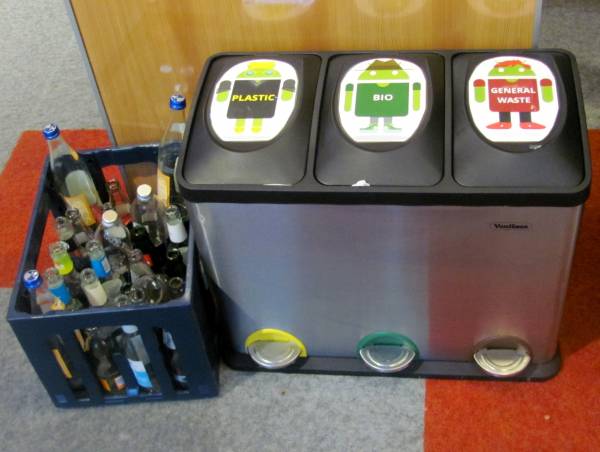
Photo: L. Frank
The separate collection and recycling is definitely the right direction. But it’s years and decades of educational work with the population, the development of legislation, huge investments. But the waste problem needs to be solved now. The draft National waste management strategy incineration plays a part in the end of the chain, where the final elimination. Over time, it probably will, but until the power of fire can and should be used more actively.
To ensure that emotions do not interfere with the analysis of the impact of waste incineration on the environment in comparison with other aspects of their processing, the researchers propose to use such indicators as: life cycle assessment (LCA) and cost-benefit analysis (DEZ). In the method LCA is a growing focus on environmental aspects, whereas the ECD focuses on economic indicators. As a rule, the cost-benefit analysis takes into account the financial life-cycle costs and environmental costs, which together constitute a kind of social cost. Similar studies were carried out, for example, in Sweden. Their results revealed that:
worst way to waste treatment, which is the greatest ecological and social risk, and removal to the landfill. This is due to the release of methane in landfills, as well as the low degree of secondary use of resources and the impossibility of recording the reduction of the environmental impact and saving costs;
– utilization (recycling) of waste is more profitable from an environmental point of view, but costly. Social costs depend on the method of assessment of environmental impact, recycling easily recyclable materials from the social point of view is more cost-effective than incineration;
– environmental and social costs of anaerobic fermentation and composting of biodegradable waste is lower than in their landfill, but higher than the burning.
Of course, all the arguments are washed away only in the case if the incineration plant has the necessary conditions for clearance of combustion products. Theoretically, it is now possible to filter everything, but it will make the process of incineration is deeply unprofitable. In practice, therefore, strive to ensure that the concentration of harmful substances in gases do not exceed levels established normative in a particular country. To control the cleaning processes have independent experts (the same environmentalists), since the “workers” there are many technical possibilities to adjust the measurements.
Generally, the process of filtration combustion is not only the most expensive step, but complex in operation. With a slight deviation from technological parameters in the “cleaned” gases may even appear dangerous substances, which was not there initially (e.g., ammonia).
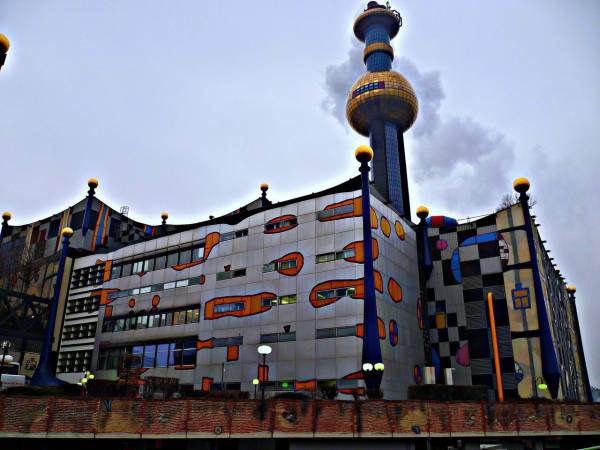
Photo: Venagid.ru
An example of what the concept of “waste incineration” and “ecology” are antithetical, can serve as waste incineration, District heating plant spittelau, opened in Vienna directly in the city.
The author of the appearance of the enterprise became a well-known architect friedensreich Hundertwasser. He immediately agreed to work on the project. As an advocate for the environment, Hundertwasser believed that garbage should burn, and processed, removing most of it. However, the mayor of Vienna assured him that the heat from incineration is used for heating businesses and homes. Also to the architect promised the strictest compliance with measures of environmental safety at the new plant.
The company may dispose of 265 thousand tons of waste annually. Electricity for their own needs, it develops independently. In addition, it supplies heat to 60 thousand Viennese apartments. Near the company in the same style built office of the company, which supplies thermal energy.
The district has become a tourist attraction. On its roof is a restaurant. Next, not only office buildings, but also the elite residential village kindergarten. In the lobby of the building often hosts art exhibitions, and in the yard during the summer are held folklore festivals.


